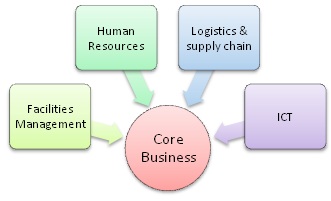 Facilities Managers today have far greater opportunity to add value to their organisation and client through efficient management and strategic planning. Increasingly, we are seeing facilities management professionals given a seat at the executive table when business models and strategies are formulated. This has not always been the case and in the past FM activities were viewed as a business cost rather than adding business value. A key driver of this change has been technology and software platforms which allow FMs to present information in a strategic way to business leaders and decision makers. The utilisation of software packages has evolved rapidly over the last several years and integrated facilities management systems and building information modeling (BIM) will continue to be buzz words in the FM space.
Facilities Managers today have far greater opportunity to add value to their organisation and client through efficient management and strategic planning. Increasingly, we are seeing facilities management professionals given a seat at the executive table when business models and strategies are formulated. This has not always been the case and in the past FM activities were viewed as a business cost rather than adding business value. A key driver of this change has been technology and software platforms which allow FMs to present information in a strategic way to business leaders and decision makers. The utilisation of software packages has evolved rapidly over the last several years and integrated facilities management systems and building information modeling (BIM) will continue to be buzz words in the FM space.
The backbone, and indeed the strength or weakness of any facilities management software package is the information fed into it. A common problem faced by Facilities Managers is inaccurate or incomplete asset registers. With increasing demand for facilities management to be more strategic, appropriately managed asset registers are an invaluable source of information. It could be argued that a well maintained asset register is the bedrock on which a quality total asset management process is built and further developed. The challenge for FM professionals is ensuring they are always working from “one version of the truth”.
Key information which feed into an asset register and link to facilities management strategy plans are as follows.
- Asset management, strategy and planning
- Procurement
- Maintenance history and expenditures
- Capital works
- Condition assessment
- Compliance
- Asset disposal
- Life-cycle replacement
- Reporting and analysis
An example of the useful information captured in asset registers which shape FM decisions are;
- What are the assets, plant and equipment?
- What condition are they in?
- Physical properties.
- Technical data.
- Property title details.
- Maintenance and service history.
- Performance and reporting.
- Benchmarking.
- Compliance and regulatory requirements.
- Warranty information.
- What maintenance strategy is required in alignment with available budgets and funding?
- Is the service level agreement (SLA) appropriate?
- What is the right service delivery mix – PMs vs. RMs.?
- Data to drive whole- of –life (WOL) and life-cycle-replacement (LCR)decisions
- What FM structure and resources are required to deliver on contractual obligations and client expectations?
- Maintenance expenditure, forecast and planning.
- Financial information useful for investment and purchasing decisions such as NPV, IRR, lease or buy and disposal.
Developing the Asset Register
The main stages in developing an asset register
Analysing requirements – It is important to understand the needs of the client and what information is required. Collecting data can be very expensive and a drain on limited resources. Facilities Managers must determine the right balance on what information is really needed and is likely to provide real value to the client. As a guide there are three general data sets required as a basis for an asset register.
- Management reporting
- Planning information
- Operations management
Developing solutions – Finding the best options, what are the appropriate technologies, data collection and storage methods, ease of operator use, ongoing system maintenance and cost.
Plan the asset register – An asset register can be in a number of different models, formats and asset hierarchy depending on requirements.
- Unified composite – Small organisations, geographical separation, centralised management and one data base.
- Segmented autonomous – Larger organisations with individual business centres, segmented on a geographical basis, provides focus on individual services and asset groups.
- Umbrella integration – Spans more than one register or data warehouse, multi-disciplinary structures or organisations with consolidated reporting responsibilities.
- Hierarchy – system, sub-system, facilities, components and sub-components.
Implementing the register and solutions – Despite a strong focus on analysis, development and planning, implementation is where it can fall down if not done well.
- Assign a program leader.
- Agree on timeframes, milestones etc.
- Agreed naming conventions, knowledge management process.
- IT compatibility.
- Data cleanse and transfer.
- Managing risk.
- Change management.
- Access and usability.
- Training.
Monitor and continuous improvement – Implement a continuous improvement process to ensure accuracy and relevance of collected data. “One version of the truth”
Tying it all together
|
FM Strategies |
Asset Register |
FM Challenges |
| Strategic facilities Planning
Strategic asset management Space planning and workplace strategies Facilities support services Asset maintenance plan Performance and reporting |
High quality decision making
Builds the knowledge pool Drives innovation, learning and solutions Governance Integrated planning
|
Monitoring and control
Contracts management Scope creep Evaluation and selection of service providers Contractor management Budget and funding constraints Evaluation of added value |
Tony Grima



